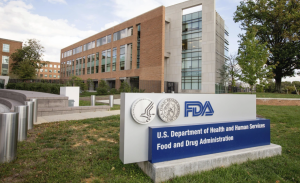For companies operating in FDA-regulated industries—such as pharmaceuticals, medical devices, food manufacturing, and biotechnology—FDA inspections are an inevitable and crucial part of maintaining compliance. Understanding the inspection process and preparing adequately can make a significant difference in ensuring a smooth experience and maintaining compliance with FDA regulations.
Why Does the FDA Conduct Inspections?
 The FDA (Food and Drug Administration) conducts inspections to ensure that companies manufacture high quality products and comply with federal regulations regarding the safety, efficacy, quality and labeling of their products. Inspections serve to verify that manufacturing facilities follow Good Manufacturing Practices (GMPs), adhere to safety guidelines, and produce products that meet established standards. The legal authority for inspections is outlined in the Federal Food, Drug, and Cosmetic Act (FD&C Act) 21 U.S.C. §374.
The FDA (Food and Drug Administration) conducts inspections to ensure that companies manufacture high quality products and comply with federal regulations regarding the safety, efficacy, quality and labeling of their products. Inspections serve to verify that manufacturing facilities follow Good Manufacturing Practices (GMPs), adhere to safety guidelines, and produce products that meet established standards. The legal authority for inspections is outlined in the Federal Food, Drug, and Cosmetic Act (FD&C Act) 21 U.S.C. §374.
Types of FDA Inspections
FDA inspections can fall into several categories, including:
-
Pre-Approval Inspections (PAI): Conducted before the FDA grants approval for a new product. These inspections verify the accuracy of the information submitted in regulatory applications (21 CFR Part 314.125 for drugs, 21 CFR Part 814.42 for medical devices).
-
Routine Surveillance Inspections: Periodic inspections to ensure ongoing compliance with regulations. These can be announced or unannounced (21 CFR Part 820 for medical devices, 21 CFR Part 211 for pharmaceuticals).
-
For-Cause Inspections: Triggered by a specific concern, such as a complaint, adverse event, or suspected regulatory violation (21 CFR Part 7.3(g) outlines recall classifications based on these inspections).
-
Compliance Follow-Up Inspections: Conducted to verify corrective actions taken in response to previous inspection findings.
Sampling During Pharma Inspections
To help ensure that high-quality drugs are sold in the U.S., FDA maintains a comprehensive quality surveillance program. A critical function of this program is testing selected drugs in FDA laboratories. This includes testing active pharmaceutical ingredients (APIs). FDA laboratories generally test drugs to standards set by the U.S. Pharmacopeia (USP), an organization that publishes quality monographs for medicines including attributes such as:
- Identity: is it the right drug as indicated on the label?
- Assay: how much drug is there and is it consistent with the labeled amount?
- Impurities: are impurities within established specifications?
- Dissolution: does the active ingredient dissolve out of the dosage unit so that the drug is available for the body to absorb?
FDA quality surveillance program includes multiple tools that complement sampling and testing. These tools include sampling assignment as a result of inspections, evaluation of post-market quality reports, signal detection, and data analysis.
What Happens During an FDA Inspection?
While each inspection may vary slightly depending on the industry and facility type, most follow a structured process:
-
Notice of Inspection: The FDA may or may not provide advance notice of an inspection. When notified, companies should quickly organize relevant personnel and documentation (FDA Form 482 – Notice of Inspection).
-
Opening Meeting: The FDA investigator(s) will present their credentials and explain the purpose and scope of the inspection.
-
Facility Walkthrough: Inspectors tour the facility, observe operations, and assess compliance with regulatory requirements.
-
Document and Record Review: The FDA will request to review various documents, such as standard operating procedures (SOPs), batch records, testing, employee training records, deviation reports, verify data integrity, ALCOA and (21 CFR Part 11 for electronic records and signatures).
-
Interviews: Inspectors may interview employees at various levels to gauge their understanding of compliance requirements and daily operations.
-
Observations and Notations: Any potential violations or concerns are noted, typically recorded on FDA Form 483 and issued at the close of an inspection.
-
Closing Meeting: The inspector provides preliminary feedback and discusses any observations that may require corrective actions.
How to Prepare for an FDA Inspection
-
Maintain a State of Readiness: Always operate as if an inspection could occur at any time.
-
Train Employees: Ensure that staff members understand regulatory requirements and are prepared to answer questions confidently and accurately.
-
Conduct Internal Audits: Regular self-inspections can help identify and address potential compliance gaps before an FDA inspection.
-
Organize Documentation: Maintain well-organized, readily accessible records to streamline the document review process.
-
Establish an Inspection Plan: Have a clear strategy in place, including designated personnel to guide inspectors, manage documentation requests, and address findings promptly.
Post-Inspection Actions
After an FDA inspection, the company may receive an FDA Form 483 if compliance issues were noted. Addressing these findings promptly through corrective and preventive actions (CAPAs) is crucial to demonstrating commitment to compliance. In some cases, the FDA may issue a Warning Letter (21 CFR Part 7.3) if significant violations are found, which requires a more formal response and resolution.
Conclusion
An FDA inspection is a critical event that can impact a company’s ability to operate and bring products to market. Proper preparation, adherence to regulatory standards, and a proactive compliance culture can help companies navigate inspections successfully. By staying informed and ready, businesses can not only pass inspections but also strengthen their overall compliance programs and ensure public safety.
Are you prepared for an inspection at your facility? Regulatory Compliance Associates® (RCA) can help your team prepare for inspections, manage inspections or help remediate any adverse findings once the inspection is complete. From developing a training program that suits your professional needs, company goals, and preferred learning style. To working with your leadership to create a response strategy, we have you covered.
To begin the Regulatory Compliance Associates scoping process today, please enter your information in the blue form below and click the submit button at the bottom of the webpage. You may also email us at [email protected].



 The FDA has recently issued the
The FDA has recently issued the